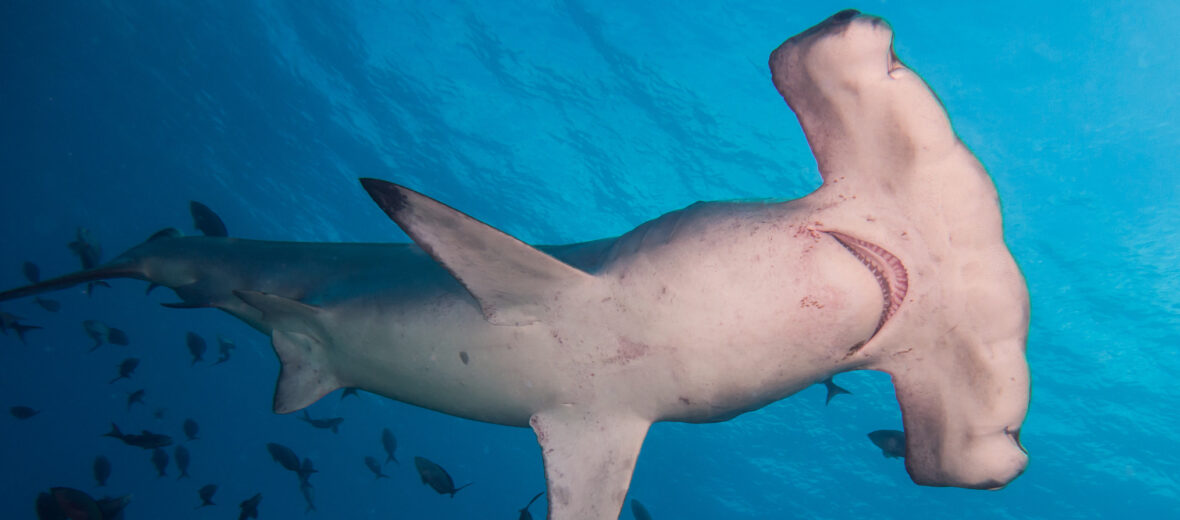
There are 9 known species of hammerhead shark. They range in size, with the great hammerhead shark being the largest. They are all dangerous and capable of inflicting a painful damaging bite! There have been no recorded deaths though due to a hammerhead shark bite to date. Only a select few species have been known to attack humans and only 4 shark species are considered serious threats: the tiger shark, the great white, the bull shark and the oceanic whitetip. Of the hammerhead sharks, only 3 known species have ever attacked humans: the great, scalloped, and the smooth. Only 17 times in the past 450 years have there been recorded attacks. None of those attacks were serious enough to result in a fatality.
First the Stats…
Scientific name: Sphyrnidae
Weight: Up to 1,200 lbs.
Length: Up to 20 feet
Lifespan: Up to 35 years
Now on to the Facts!
1.) The official name for their hammer shaped head is called cephalofil.
2.) With their eyes placed at the outer portion of each end of the “hammer” they are afforded 360° vision. They are able to see in front, behind, above, and below them. Pretty cool! The downside is that they do have a pretty sizable blind spot directly in front of their noses.
3.) Using an organ called the ampullae of Lorenzini these sharks, like other sharks, are able to detect faint electrical impulses of prey; which aids in hunting for food. It has been speculated that they can even pick up the impulse of a human heartbeat from half a mile away!
4.) Scalloped Hammerheads are often seen in large schools of 100 or more sharks. These schools are typically comprised of females, as a lone shark will get hounded by males. Groups of females are a little more protected from a male’s advances. Just like a single’s bar.
5.) Hammerhead Sharks are viviparous, which means that the pups grow inside the female, like humans. Unlike humans though, the mother gives birth to 20 – 50 live pups at once!
But wait, there’s more on the hammerhead shark!
6.) Their diet typically consists of rays, squids, shrimp, small fish, and even other shark species.
7.) The great hammerhead is also known as a cannibal of it’s species as it will eat smaller hammerhead sharks! Perhaps they should change their name to Sphyrnidae hannibalis lecterus?
Did you know…?
Hammerheads are actually one of the few fish able to get a tan from the sun. This is due to their typical shallow water habitat.
8.) Hammerheads are nocturnal (active at night).
9.) They will usually give warning signs if agitated. The typical sign of a potential attack is darting and wild contortions. This is your signal to get out of the water.
10.) Of the 9 species, 2 are listed as Endangered. Their population has declined in just a short period of time, and 2 are classified as Vulnerable, which means their population is declining. They are the scalloped, the great, the smooth, and the smalleye.
Now a Short Hammerhead Shark Video!
Also, check out the Critter Science YouTube channel. Videos added frequently!
Want to suggest a critter for me to write about? Let me know here.



